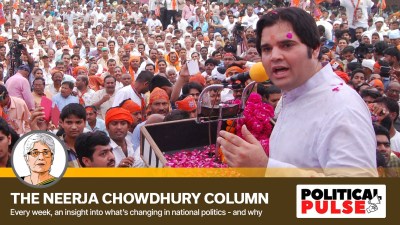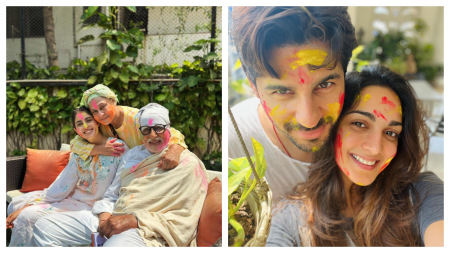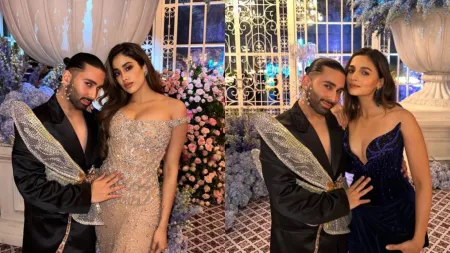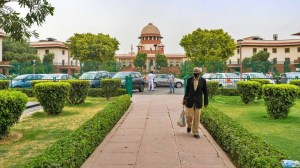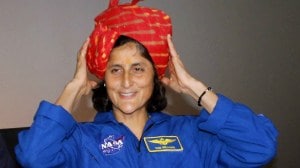- India
- International
‘Lipstick Under My Burkha’ looks at the life of four women behind the closed quarters
Director Alankrita Shrivastava’s Lipstick Under My Burkha is scheduled to be screened at Tokyo and Mumbai film festivals in October.
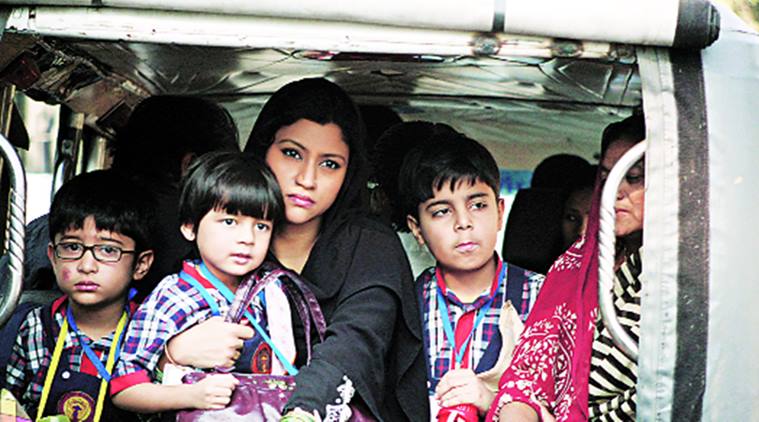 Still from ‘Lipstick Under My Burkha’.
Still from ‘Lipstick Under My Burkha’.
WHILE preparing for Prakash Jha-directed Raajneeti (2010), its executive producer Alankrita Shrivastava spent a year in the old neighbourhoods of Bhopal, searching for locations and conducting workshops with local actors. She returned to the city when Jha made his next, Satyagraha (2013), and again for her second directorial outing, Lipstick Under My Burkha. “What interested me about Bhopal is how Hindus and Muslims live together. People, in the old parts, live in close quarters; two different cultures co-exist there. That’s something I was tempted to capture,” says Shrivastava.
Later this month, Lipstick Under My Burkha premieres at the Tokyo Film Festival, followed by screenings at Mumbai Film Festival (MFF) where it is competing in the India Gold segment. The film, which was picked up by Berlin-based sales company
M-Appeal recently, follows the journey of a burkha-clad college girl who aspires to be pop singer; a two-timing beautician trying to escape the claustrophobia of her small town; a housewife and mother of three, who leads the alternate life of a saleswoman, and a 55-year-old widow who rediscovers her sexuality through a phone romance. It has taken Shrivastava nearly five years to write, develop these characters, build a cohesive story around them and capture it on the big screen.“Through this movie, I wanted to explore the feeling of not being free and the struggle for freedom,” she says.
By the time, Shrivastava wrapped up Turning 30 (2011), she was quite exhausted. “I have been working non-stop as an assistant director ever since I finished my studies. The year 2010 was especially very taxing as I worked on two films together — in between the Raajneeti schedules, I filmed Turning 30,” she says. Looking for a breather, Shrivastava travelled across Bihar, where she had spent her childhood, and made a documentary on the state’s cultural history, titled Sunehari Dastaan: Bihar Ki Bhoomi Se, produced by Jha. This experience was refreshing and she returned to scripting her next project. At that time, she was drawn to a legal drama. Though she toiled over its script for a while, she was not happy with it. Instead, she focused on scripting the story of four women based in Bhopal. It was selected for the script-writing lab of National Film Development Corporation of India in 2012. “The lab turned out to be an incredible experience and mentor Urmi Juvekar (who has written Oye Lucky! Lucky Oye! and Detective Byomkesh Bakshy!) was of immense help,” says Shrivastava, who shot the first schedule of Lipstick Under My Burkha in 2014 and wrapped up the shoot in March 2015.
Even though for most part of her career she has assisted Jha — whose movies are often dominated by strong male characters embroiled in political and corruption dramas — as a story-teller, she is inclined towards women. “Telling a story from their point view, drives me to write. My first film was like that. So are the other projects that I am currently writing. In India, even when we are telling stories of women, they tend to be from the male perspective,” she says.

The root of such feminist point of view, according to the director, is in her boarding school days at Dehradun’s Welham Girls’ School, followed by the influences that studying at LSR College and Jamia Milia Islamia University had on her.
For Shrivastava, Turning 30 is a very honest film that reflects her world. Yet, Lipstick Under My Burkha is closer to her heart. “In this movie, I have expressed the internal conflicts of the characters in a naked way,” she confesses. The film is the product of a very close collaborative process. “Both Ratna Pathak Shah and Konkona Sen Sharma had their own ideas about approaching their character. They were both very open to rehearsals and readings,” she says. While Ratna and Konkona were first choices for their roles, Aahana Kumra and Plabita Borthakur went through the casting process.
Next, she returns to the legal drama. “There is more depth in my writing now. This has come from life and wanting to take story-telling seriously. I should keep digging deeper,” says the writer-director. Though women-centric films have always been made, albeit sporadically, she believes, the success of Kaahani (2012), Queen (2014) and Neerja (2016) have proved that they were accepted in the mainstream. “Of the thousands of films made in India, only handful of them are women-centric. Most rom-coms too are from the male point of view,” she says.
However, she believes it is unfair to put the burden on women directors to tell their stories. “Having more women directors does not equal to having women-centric movies. It would be fantastic if more male directors can make movies which are sensitive to women,” says Shrivastava, lauding MFF for instituting awards for Best Film on Gender Equality and Best Indian Female Filmmaker.
Photos
Apr 25: Latest News
- 01
- 02
- 03
- 04
- 05











